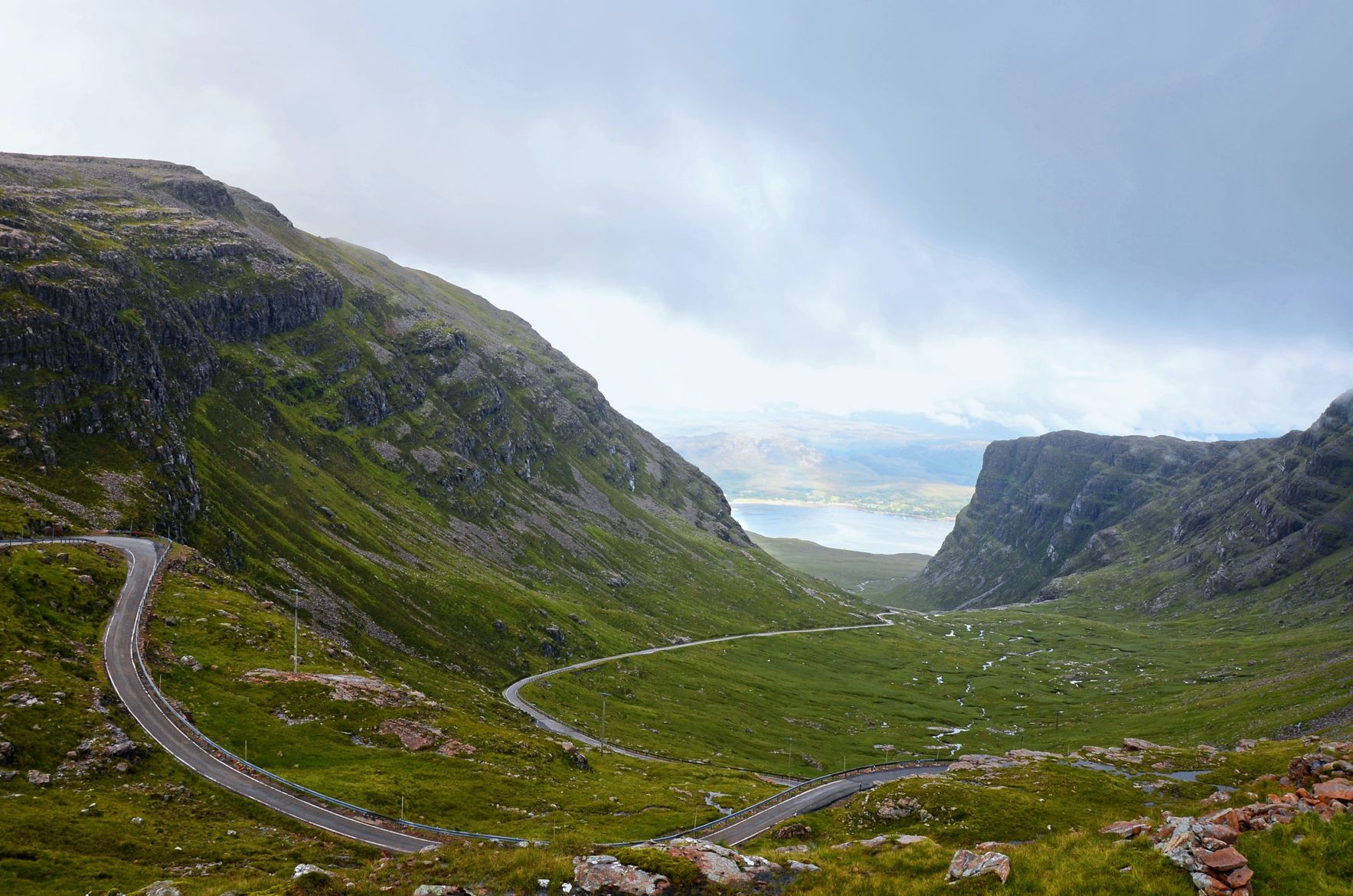Great Britain Traffic Guide
On the Road in British Traffic
The island of Great Britain, from the English south coast at the English Channel up to the Scottish Highlands, is always worth a trip. If you want to move freely from city to city to also discover the most beautiful areas in the countryside, traveling by car is a good option. Within the large cities, you're better off using public transport.
In this guide, you'll learn how to master the unfamiliar left-hand traffic in the United Kingdom. You'll also get to know important traffic rules and what fines may be imposed for violations.
Overview of Traffic Rules in the United Kingdom
- Driving in the United Kingdom is generally allowed from age 18. The EU driver's license is still recognized as a valid driving permit even after Brexit.
- The UK practices left-hand driving. Consequently, overtaking is done on the right, and in the numerous British roundabouts, driving is clockwise.
- There is no general right-before-left or left-before-right rule in the UK. Right of way at most intersections is regulated by traffic signs or markings. If not, the main road has priority.
- Speed limits in the UK are indicated in miles per hour (mph). The limit is 30 mph (48 km/h) in urban areas and 60 mph (96 km/h) outside urban areas. On motorways and dual carriageways, the maximum speed limit is 70 mph (112 km/h).
- All passengers in the car must wear seat belts during the drive. The driver is also not allowed to use a mobile phone and may only make calls using a hands-free system.
- In addition to mobile phones, other distractions while driving are not permitted. This can include, for example, music at too high a volume or eating while driving.
- Besides a warning triangle, reflective vest, and first aid kit, which must be carried in the car, carrying spare bulbs is also recommended.
- The legal alcohol limit is 0.5‰ in Scotland. In other parts of the UK, the limit is 0.8‰.
- Smoking inside a vehicle is prohibited when minors under 18 are present.
- No stopping or parking is indicated in the UK by a yellow, white, or red line at the edge of the road.
Driving in the United Kingdom
The roads in the United Kingdom
The biggest challenge for drivers from abroad in British road traffic is probably the left-hand driving. However, British drivers facilitate the adjustment with their defensive and cautious driving style. Speeding or tailgating is relatively rare in the UK.

Especially in the conurbation areas around the major cities, particularly in the capital London, things can get hectic. However, you can also get around wonderfully by bus or underground there.
British drivers are particularly cautious on some country roads in less populated areas – and there are good reasons for that: In the countryside, you should be prepared for tight curves and poorly maintained roads. Especially in rain or fog, be mindful of potholes, puddles, and sections of the road that are difficult to see. Overall, however, the roads in the United Kingdom are in a predominantly good condition.
Petrol stations and charging stations
Petrol and Diesel: Petrol and diesel are widely available in the United Kingdom. Most petrol stations are open during the day until about 10 p.m. On major roads and motorways, you can also refuel 24 hours a day. In terms of pricing, British petrol stations are roughly at the European average.

Electric Cars: In England, you'll find numerous charging stations for electric cars, especially in larger cities and along main traffic routes.
In Scotland, you may need to search a bit longer for the right charging opportunity. Therefore, prepare adequately before long trips.
The network is even sparser in Wales, where very few charging stations are available.
Hydrogen Cars: In the United Kingdom, you can find about 20 hydrogen refueling stations. These are predominantly located in the major cities. Thus, making a holiday in the UK with a hydrogen car isn't impossible, but it does require a high degree of planning.
Rental car or own car?
The island of Great Britain can be reached with your own car from mainland Europe via several routes. From France, Belgium, and the Netherlands, there are over 30 different ferry connections that can take you and your car to England.
Scotland can only be reached directly by ferry for trucks. Car drivers should first take the ferry to Northern England and then drive by land to Scotland. You can also reach the UK by car through the Eurotunnel between Calais (France) and Folkestone (England).
For the importation of your own vehicle into the United Kingdom (UK), it must be insured for third-party liability. This can be demonstrated with the International Insurance Card. For vehicles from Germany, the D in the Euro plate suffices as the country code.
However, driving your own vehicle in the UK comes with some challenges. For example, cars from mainland Europe have the steering wheel on the left side, which is a disadvantage in the UK's left-hand traffic. Additionally, you should check if your headlights are adjusted for left-hand traffic before crossing.
Also, pay attention to speed indications: While your speedometer probably displays speed in km/h, the maximum speed limit on signs in the UK is given in mph.
Since these differences between British and continental European cars can make the transition to left-hand traffic unnecessarily difficult, it might be sensible to rent a car locally. To book a rental car, you must be at least 21 years old in the UK and have held a driver's license for at least one year.
Fines
Fines in the United Kingdom are relatively high compared to other countries. For parking violations, you might receive a 50% discount if you pay a penalty charge within 14 days.

For traffic offenses, penalties can be approximately as follows:
- Speeding (20 km/h over the limit): from £185
- Speeding (50 km/h over the limit): up to £3,000
- Seat belt violation: up to £100
- Illegal parking: from £70
- Drunk driving: unlimited amount
- Running a red light: from £100
- Using a mobile phone while driving: from £200
Conclusion: How to Master Left-Hand Traffic
You don't need to fear driving on the left in the United Kingdom. Most drivers adjust to the change after a short period. Additionally, British drivers are considered to be particularly considerate, which significantly eases the adaptation to the unfamiliar side of the road. Nevertheless, you should also drive cautiously and pay attention to the slightly different traffic rules.
► Here, you can find more information about the toll regulations in the United Kingdom to be optimally prepared for your trip.
